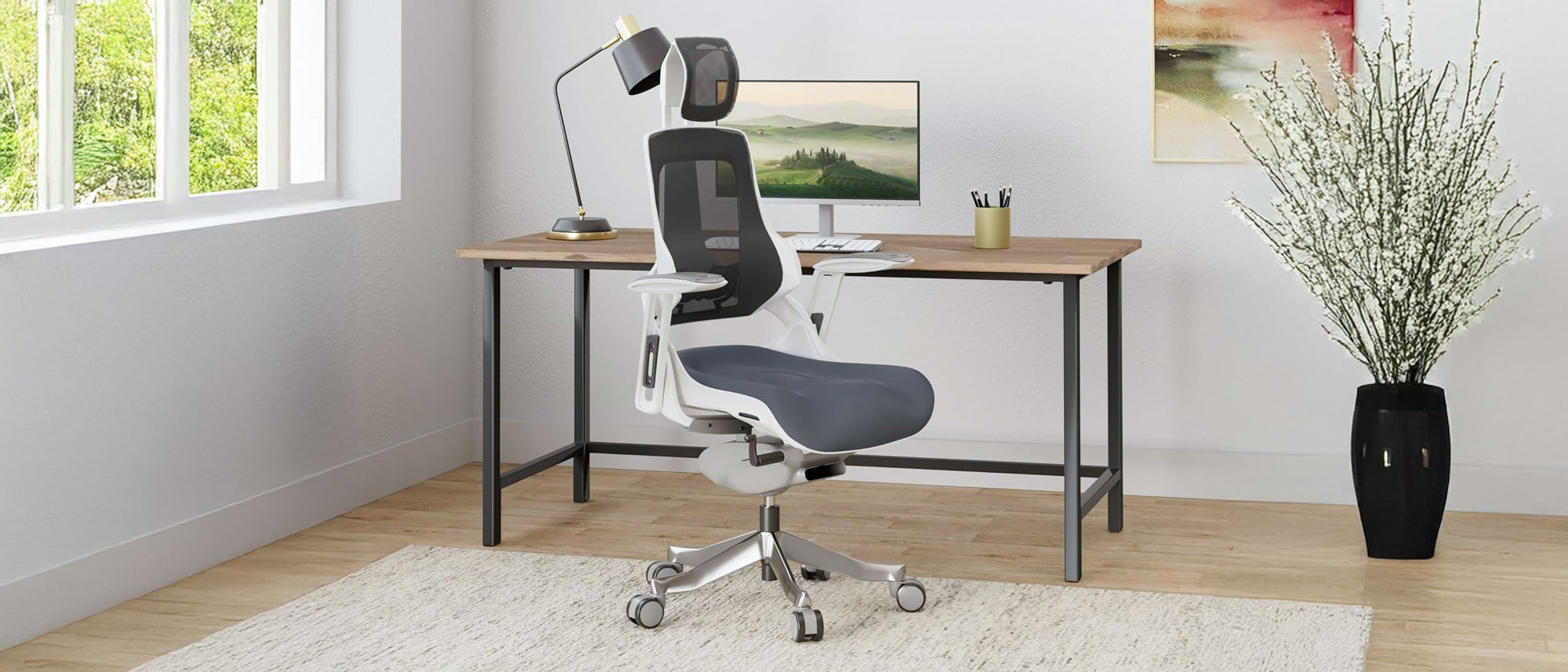Tom's Guide Verdict
The Uplift Pursuit is a uniquely designed ergonomic office chair with plenty of adjustment points. Its mesh backrest and headrest keep you cool while its thick foam seat with a waterfall edge reduces pressure on your lower body. However, its seat is on the narrow side and its 250-pound weight limit makes it hard to recommend for larger users. Overall though, you’re getting a lot of premium features at a mid-range price.
Pros
- +
Unique and modern design
- +
Loads of adjustment points
- +
Foam seat features a waterfall edge
- +
Ingenious storage compartment underneath the seat
Cons
- -
Some adjustments are less intuitive
- -
Not suited for big or very tall individuals
Why you can trust Tom's Guide
Every now and again, I decide to try out a particular office chair based on looks alone. But after spending the past six months sitting in the Uplift Pursuit, I’m equally impressed by all its ergonomic features and just how adjustable it is.
While this is my first time testing out a chair from Uplift Desk, I spent years using the Uplift V2 standing desk in my home office. The Pursuit gives you the best of both worlds with a mesh backrest and a firm but very supportive foam seat. At under $500, I was surprised to find that its seat has a waterfall edge, which you typically only see on much more premium models. I also appreciate the fact that Uplift doesn’t charge you extra for a headrest. There is one optional $40 add-on, though, in the form of rollerblade-style wheels that are my favorite quick-and-easy upgrade for any office chair.
I’ve enjoyed my time using the Uplift Pursuit on and off over this longer six-month period, and while I happen to love this chair, it won’t be for everyone due to its limitations. Its lower weight limit and narrower seat and backrest don’t make it the best fit for big and tall users. Likewise, it’s a great office chair for working comfortably with good posture, but not one that I’d recommend for lounging.
My Uplift Pursuit review will help you decide if this is the best office chair for you or if you’d be better off looking elsewhere if you want something less firm and more cushiony. Still, as a chair for getting work done and staying on task, the Uplift Pursuit really excels.
Uplift Pursuit: Cheat Sheet
- What is it? An ergonomic office chair with lots of adjustment points that has a mesh backrest and headrest with a thick foam seat.
- Who is it for? Those looking for a highly adjustable ergonomic chair at a mid-range price.
- What does it cost? The Uplift Pursuit costs $459 on its own or $500 with Uplift’s optional rollerblade casters.
- What do we like? Its modern design, all of the various adjustment points, that its seat has a waterfall edge, the included headrest and that there’s a small storage compartment underneath the seat.
- What don’t we like? The seat can feel a bit stiff at times, the armrests adjust in a non-conventional way and the chair isn’t designed for those over six feet tall or on the larger side.
Uplift Pursuit: Specs
Price | $459 |
Height range | 44.5 to 52.4 inches |
Seat width | 18.5 inches |
Seat depth | 18 inches |
Maximum load | 250 pounds |
Maximum recline | 20 degrees |
Weight | 39.6 pounds |
Material | Mesh back and headrest, fabric seat with polyurethane foam cushion, aluminum base |
Adjustment points | 9 |
Warranty | 15 years |
Uplift Pursuit: The ups
From its numerous adjustment points to its unique yet very modern design, the Uplift Pursuit has a lot going for it. This includes the fact that its mesh backrest and headrest keep you cool while its soft but firm seat cushion helps you sit with good posture for long hours.
Eye-catching ergonomics
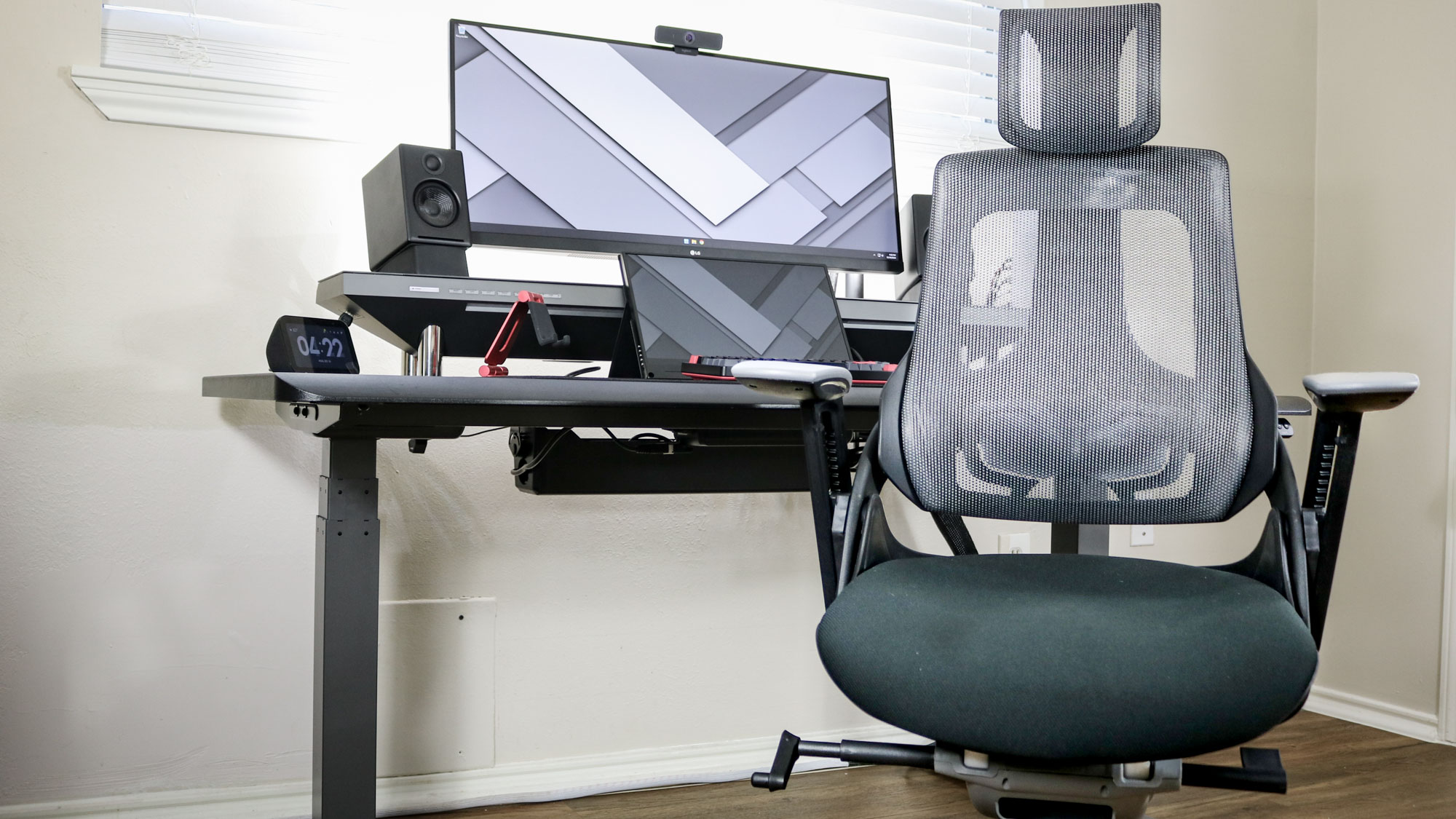
Ergonomics and “cool-looking” don’t usually go hand in hand, but the Uplift Pursuit manages to combine the two quite well. Like I mentioned before, it was the chair’s unique look that convinced me to try it out in the first place. However, its design is quite thoughtful, and the curves of its more minimalist frame all serve an ergonomic purpose.
While the Pursuit appears quite clean from the front with its smooth mesh and foam seat, the exposed screws and bolts on its backrest give it a more industrial look as do the armrests, but more on that later. Around back, you can see the chair’s lumbar support and, like the waterfall edge on its seat, you get something here that you don’t often find in a mid-range office chair: adjustable lumbar support depth.
Get instant access to breaking news, the hottest reviews, great deals and helpful tips.
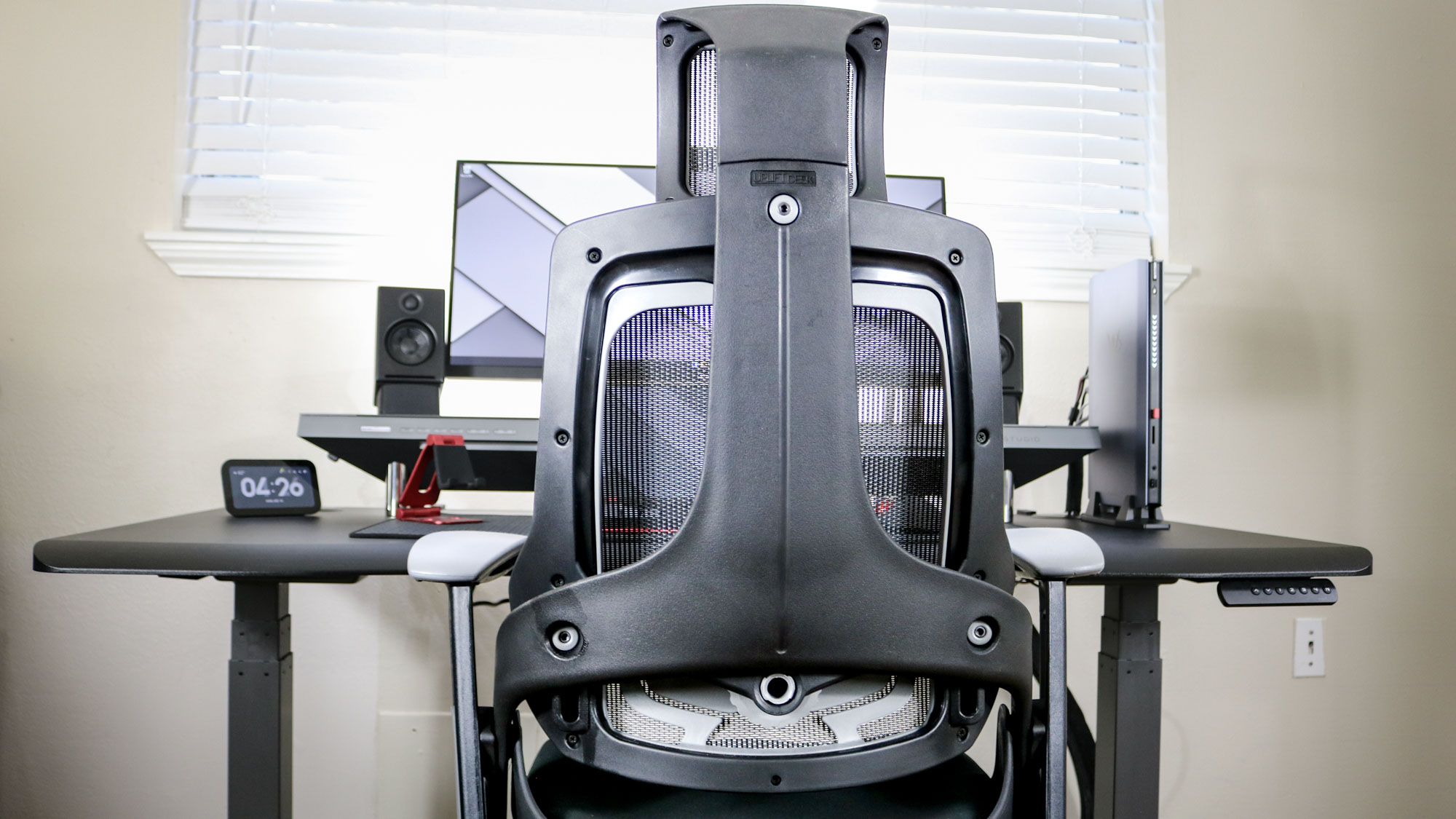
The lumbar support adjusts with the height of the Pursuit’s backrest, and by twisting a knob right under its outer frame, you can push its lumbar support mechanism forwards or pull it backwards, in a similar fashion to how you adjust the Razer Iskur V2 gaming chair.
There are a total of 9 adjustment points throughout the chair, and everything from the headrest to how the chair reclines can be customized to your liking. The only thing that isn’t adjustable on the Pursuit is the seat depth, which is why I wouldn’t recommend this chair for larger people. Still, it’s easy enough to lock in the perfect fit for you, though some parts of the Pursuit adjust quite differently than other office chairs you may be familiar with.
Supportive seat with an airy back
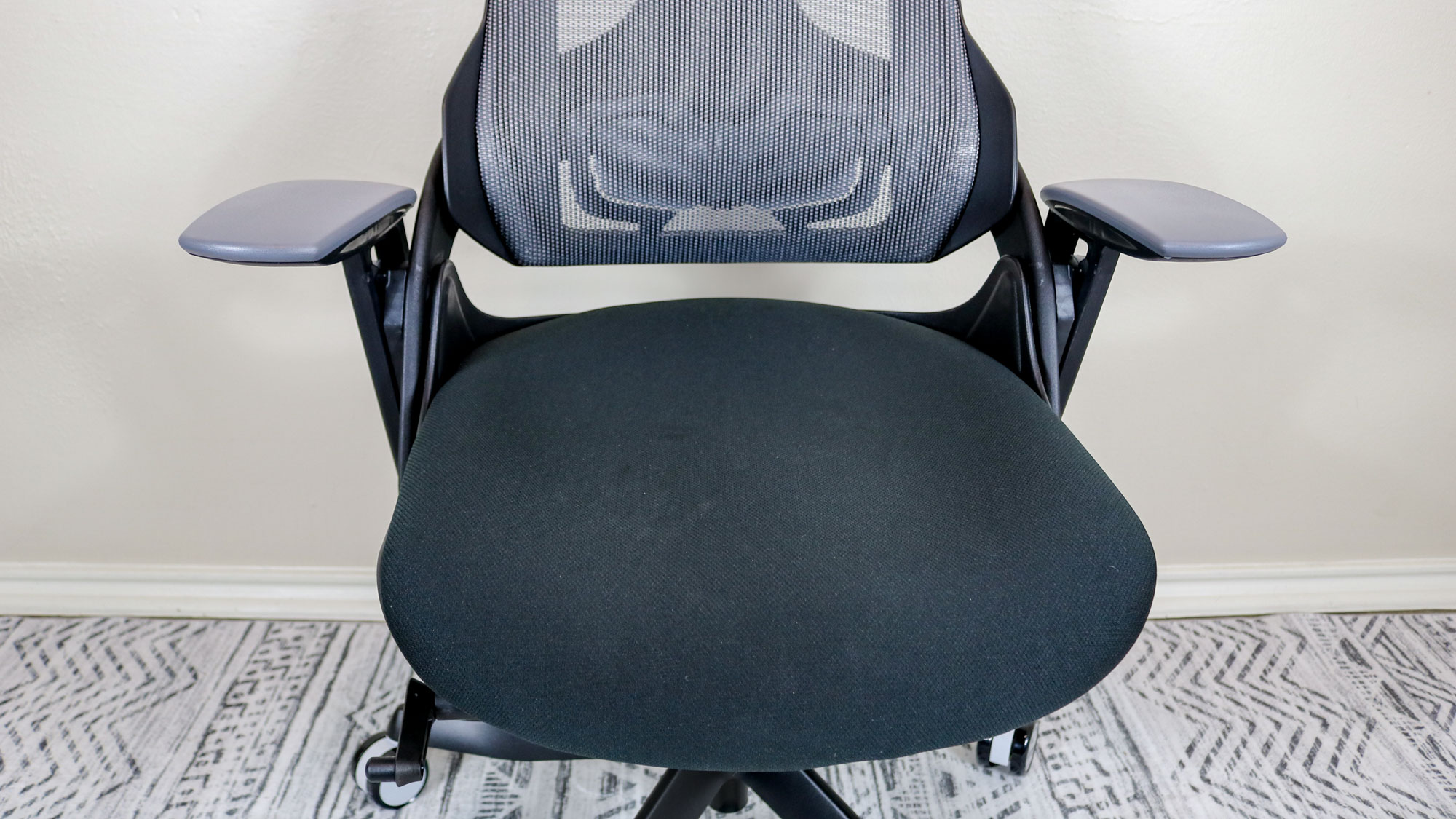
The Pursuit features a fabric seat made from 2.5-inch thick molded polyurethane foam that’s quite a bit firmer than you’ll find on an all-mesh chair like the OdinLake Ergo Butterfly 753. Although a mesh seat will keep your bottom cool, one made from thicker foam will help distribute your weight better while reducing pressure as well. This is why the X-Chair X3, which I consider to be one of the best chairs you can get for working long hours, features a hybrid mesh/foam design.
Just like that much more premium option, the Pursuit’s seat also has a waterfall edge that gently slopes downward to reduce pressure on your thighs while providing better blood circulation in your lower legs and feet.
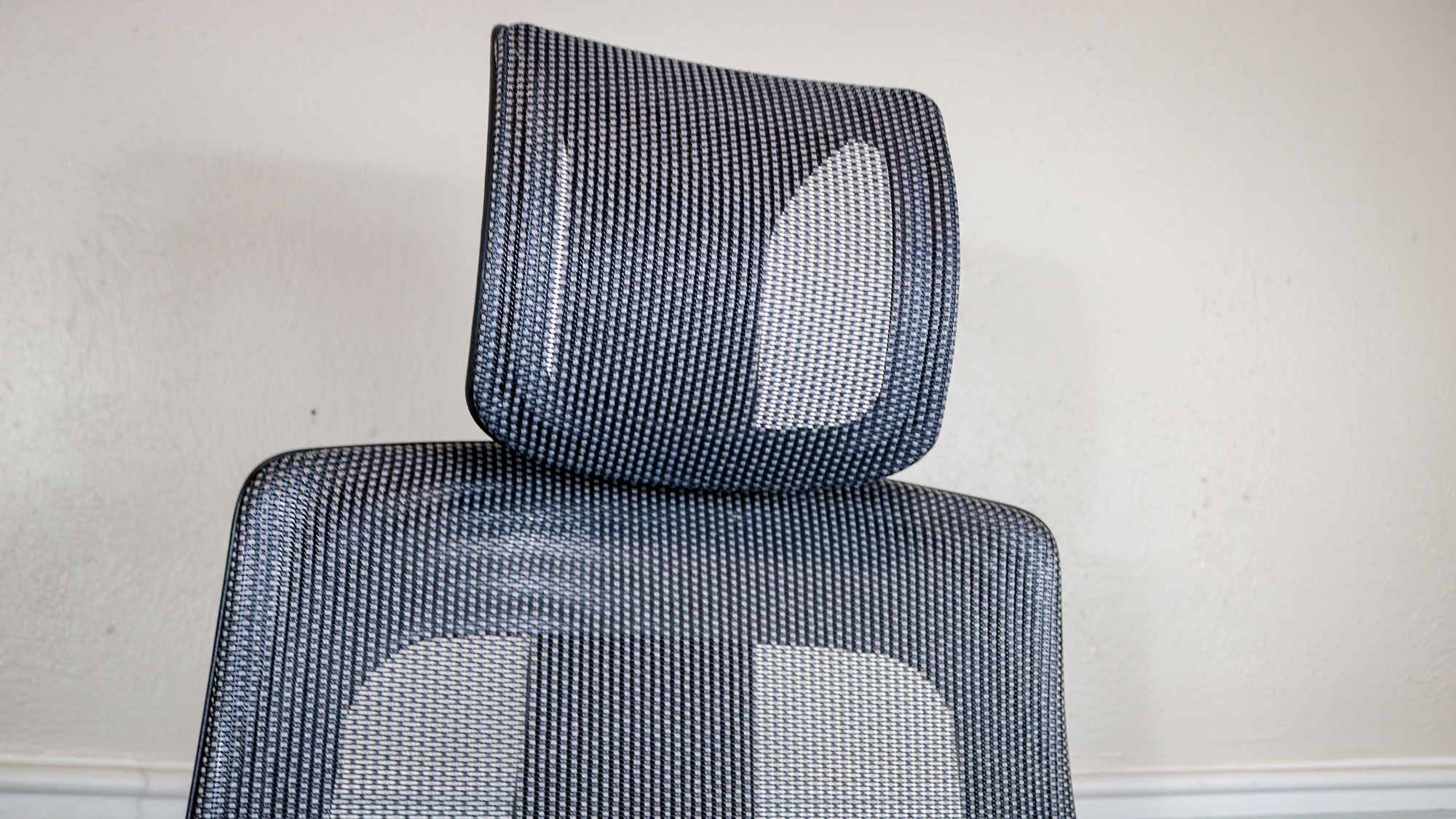
With its mesh backrest and headrest, the Pursuit provides plenty of airflow to your upper body. I like how its mesh has more of a fabric feel to it, similar to the knit backrest on the Branch Verve Chair. It's smooth to the touch but gives your back a lot of support, especially when combined with the Pursuit’s lumbar support mechanism. Even though this chair’s mesh doesn’t move with your body in a similar way to the Steelcase Karman, the parts of its frame that connect the seat to the backrest are rounded so that even when you turn to the left or the right, your sides and lower back still feel supported.
Unexpected storage
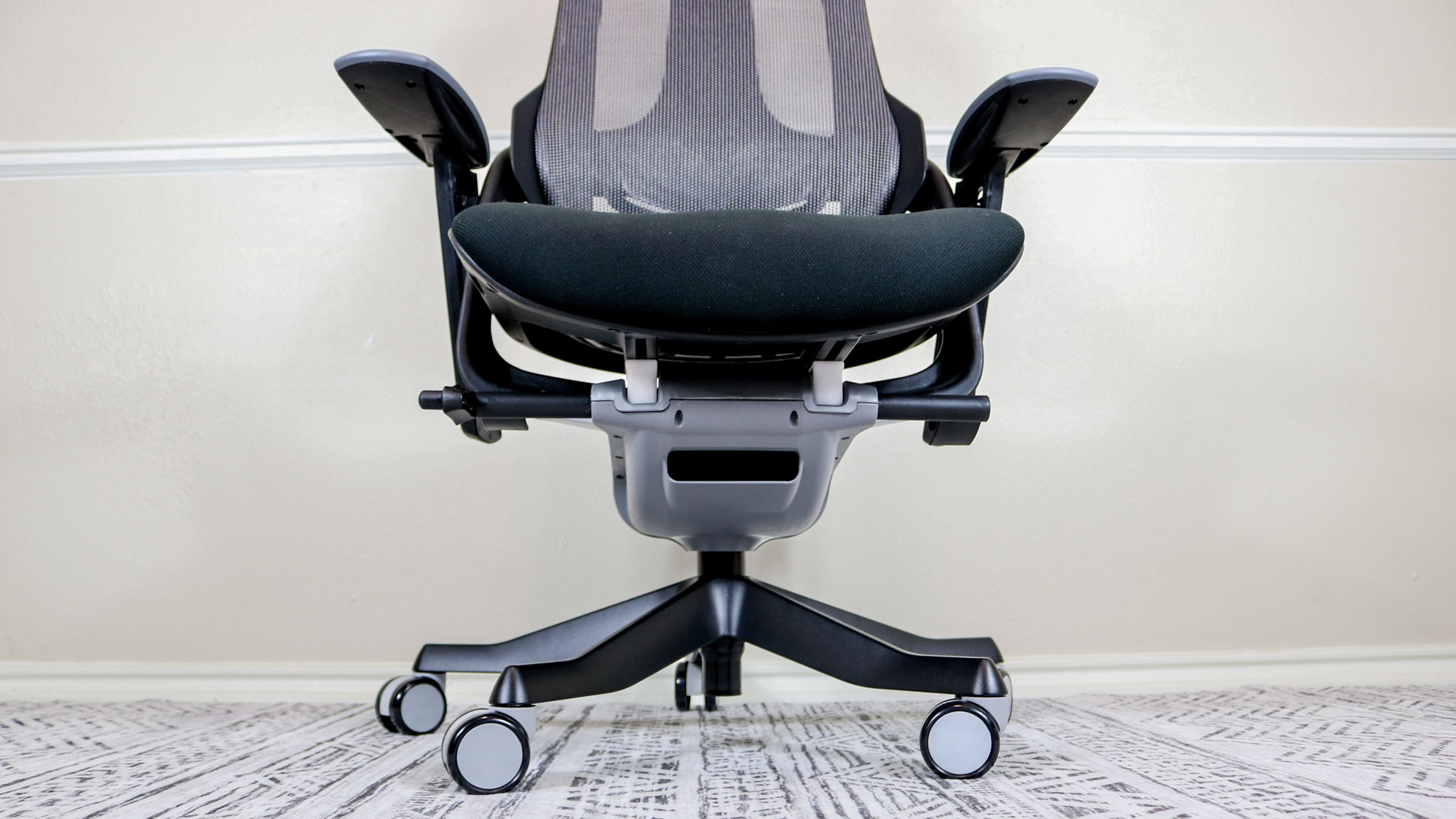
As someone who tries out a lot of different office chairs, there’s nothing I love more than when I come across an unexpected feature that I haven’t seen before. For instance, the Ergo Butterfly 753 I mentioned above has a metal bar across the rear side of its backrest that you can use to hang your coat.
Well, it took me a while to find, but the Uplift Pursuit offers its own unique take on added functionality. Directly underneath its seat and above its wheel base in the chair mechanism, there’s a small cutout. I completely overlooked it at first until I checked back on Uplift Desk’s site, as this was the first time I had encountered something like this. That cutout is actually a small storage compartment where you can keep things like your keys, your wallet or even your phone.
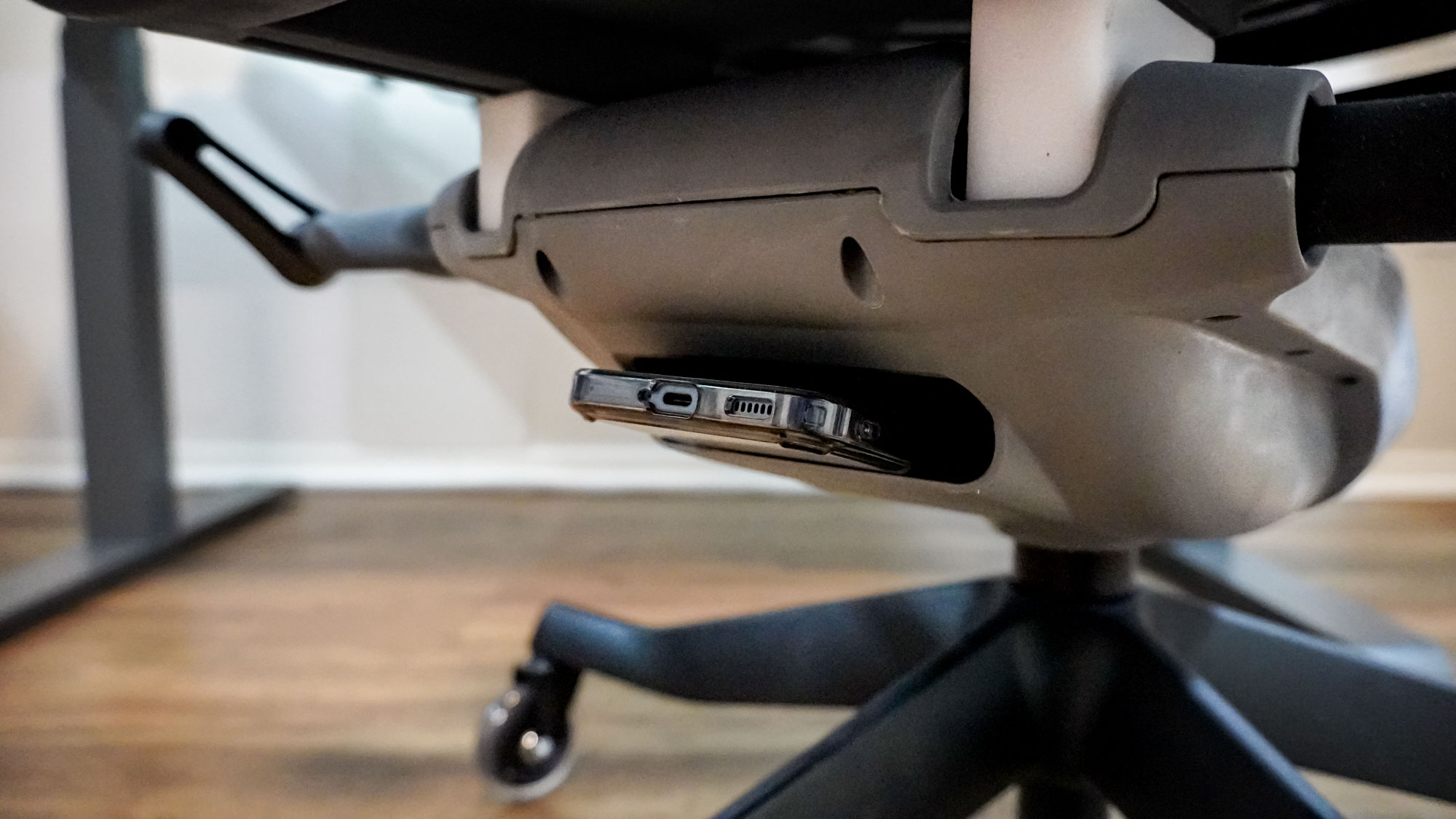
I put it to the test while writing this review by keeping my Nothing Phone 2 there instead of up on my desk like it usually is. If you’re the kind of person who gets distracted as you feel you have to check your phone whenever a notification comes in, you might want to give this a try. My phone was right there, but I never felt the need to check it, so I pressed on with my review. At 4.5 by 4.5 inches, you could store all sorts of useful things there, from a USB drive to a phone charger or even cleaning wipes.
I know this small storage compartment won’t convince you that this is the office chair for you, but I wanted to point it out. Like I said, it’s something I haven’t seen before after years of testing and reviewing chairs.
Uplift Pursuit: The downs
There’s quite a lot to like about the Uplift Pursuit, from its price to just how adjustable it is. However, it’s not without its downsides, which include some less-than-standard adjustment mechanisms and a seat that isn’t as deep or as wide as you’d find on other office chairs.
Some atypical adjustments
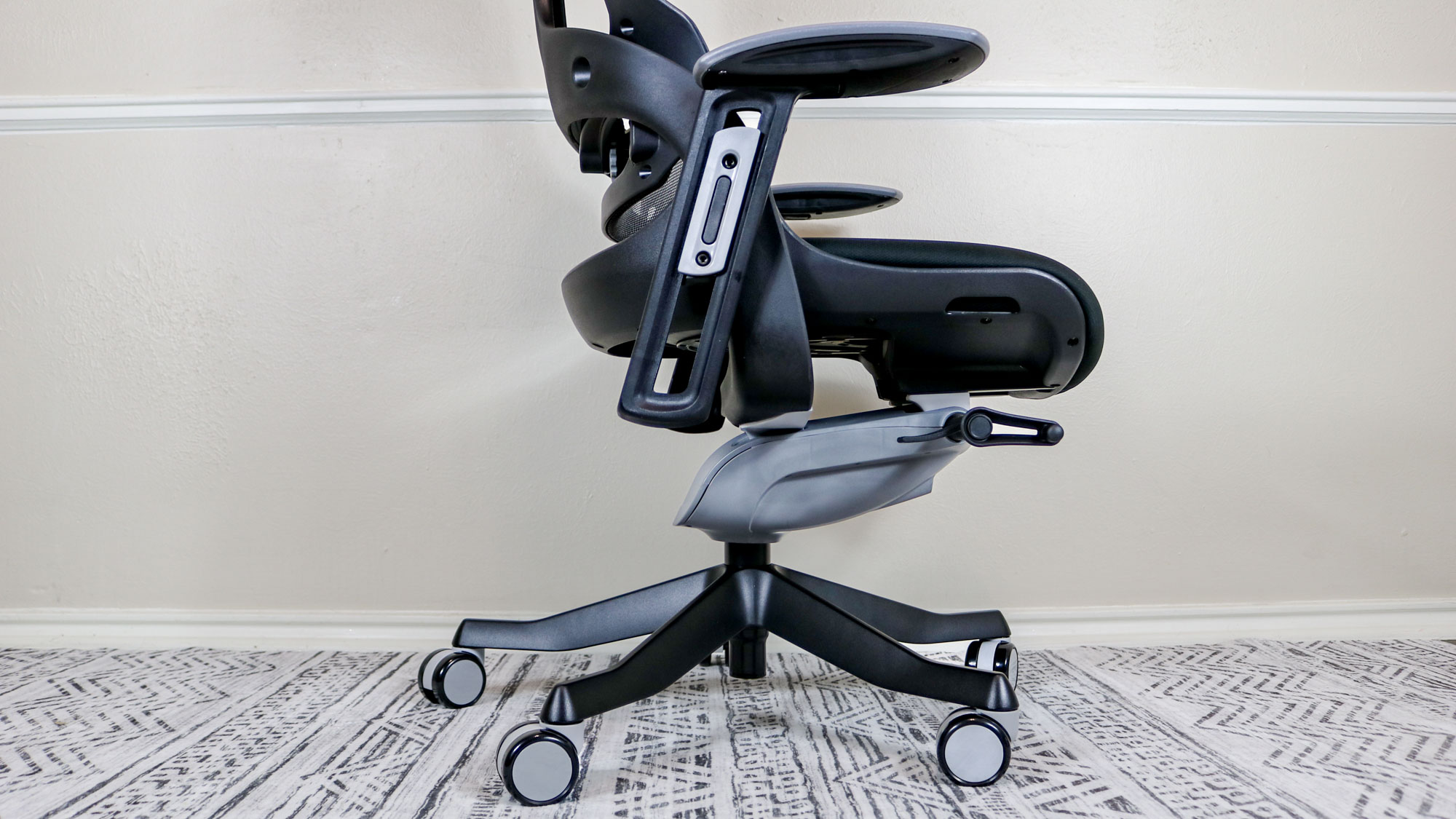
For the most part, the Pursuit can be adjusted in the same way that you would with other office chairs. You have levers on both sides, with the one on the right used to adjust the chair’s height while the one on the left allows you to recline or to lock its backrest in place. What surprised me though is that instead of a knob that you turn, the Pursuit has a crank on the right that you use to adjust its tilt tension. While this does add to the chair’s unique look, it might not be that intuitive at first glance.
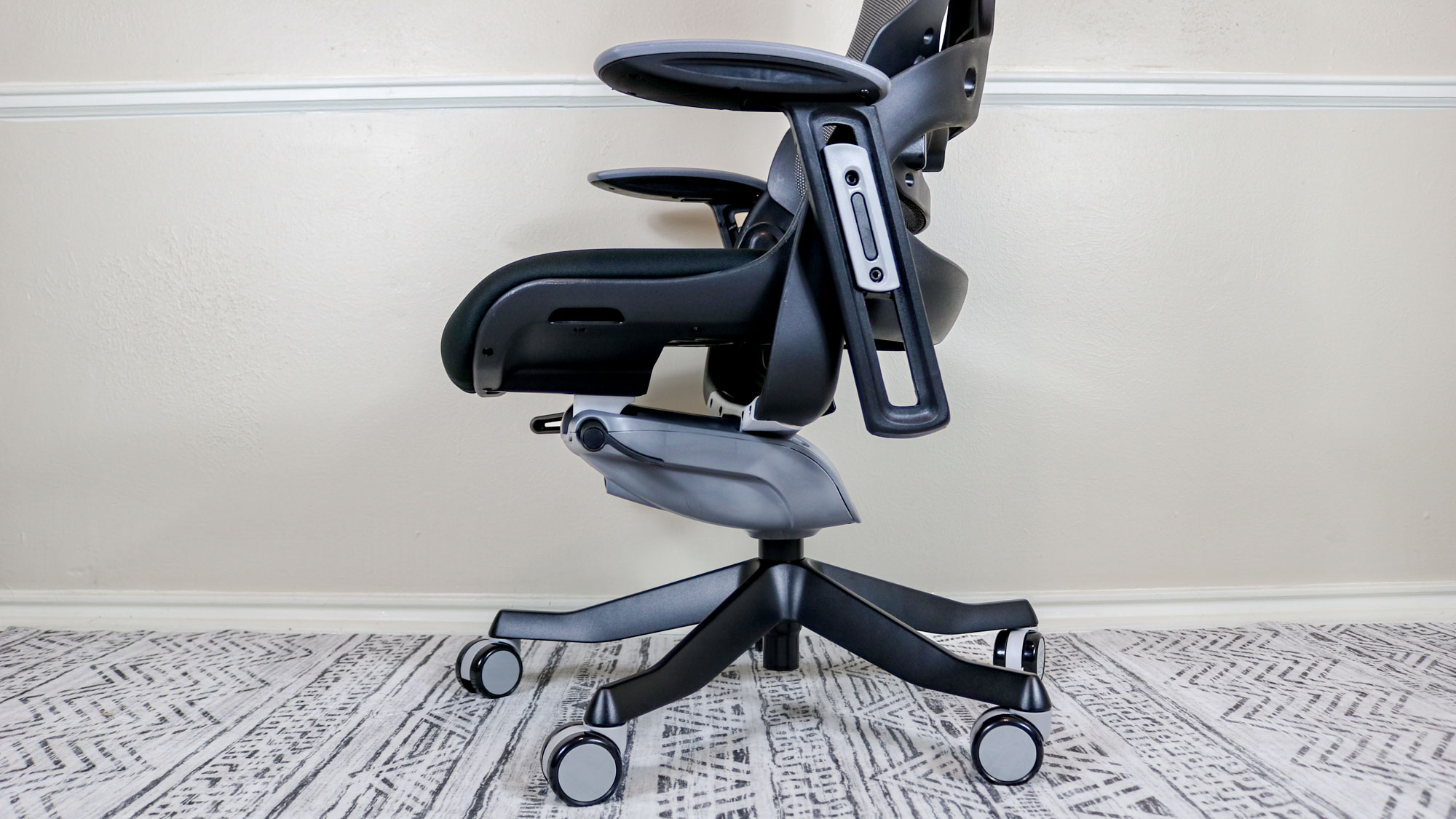
The second and more unusual adjustment with this chair is in the armrests. Normally, there’s a button on the inside or the outside of an armrest that allows you to adjust a chair’s height. With the Pursuit, though, you have to tilt each armrest back and pull them up or push them down to change their height. There are grooves on the side to help you get both armrests in the same position in terms of their height, but this definitely took some getting used to for me.
Not your deepest (or widest) seat
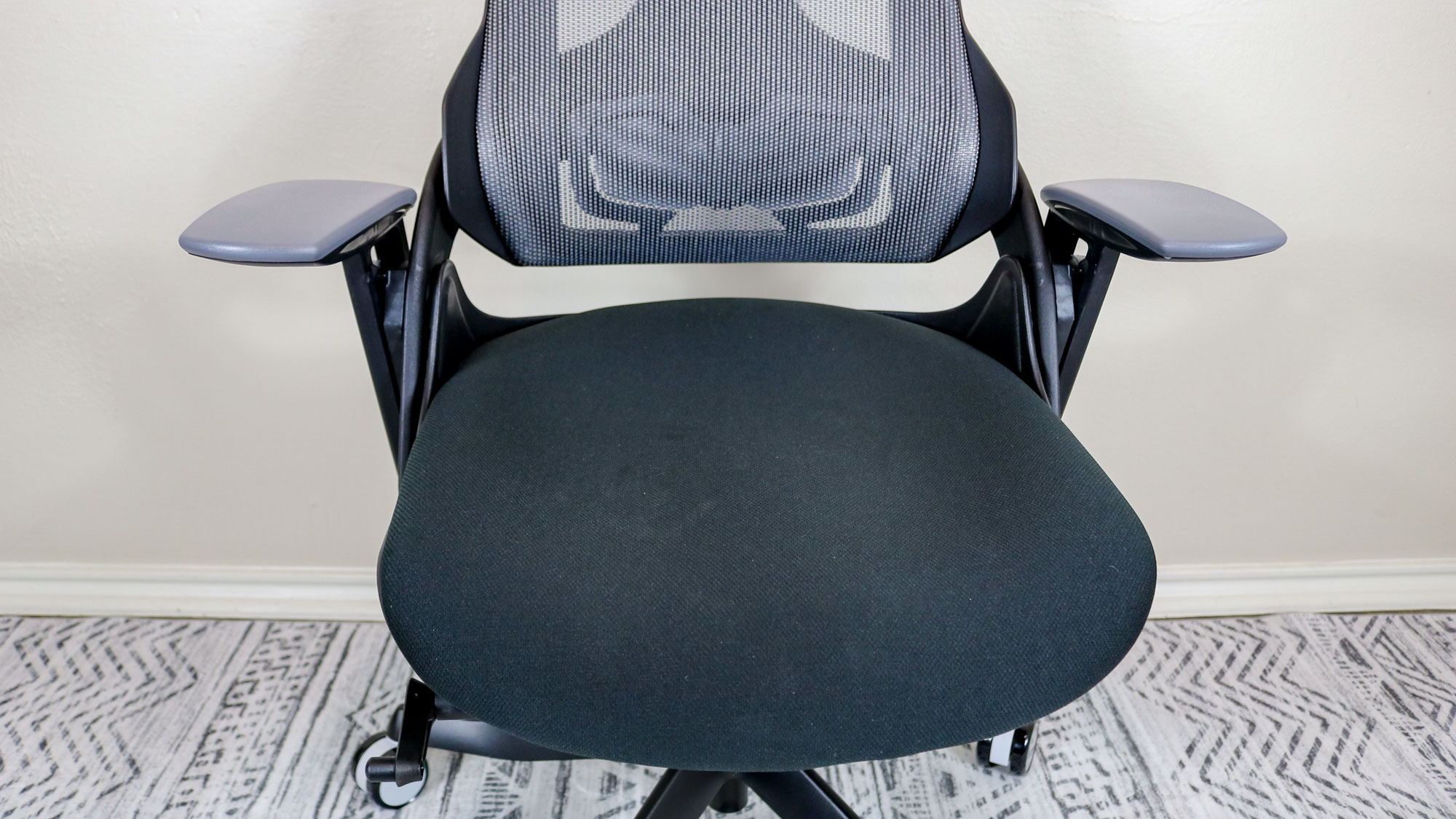
On its site, Uplift says that the Pursuit is recommended for users between 5.5 and 6.4 feet or taller. However, based on my own observations and reviews I read online, I’d say that this chair is ideal for shorter or medium height users. The reason why is that its seat pan isn’t that deep at 18 inches, nor is it adjustable like you see on some other chairs. Taller people with longer legs might find that the seat’s waterfall edge starts before their knees, which can certainly lead to discomfort.
At the same time, the Pursuit’s seat is on the narrow side compared to other chairs I’ve looked at. While most of the chairs I’ve reviewed have a seat width of 20 inches, this chair’s seat is only 18.5 inches wide. Surprisingly, the only chair with a narrower seat we’ve reviewed is the Herman Miller Aeron, which ranges from 16 to 18.5 inches depending on which version you choose. With a narrow seat and a max weight limit of 250 pounds, it’s hard to recommend the Pursuit for larger people, too.
Uplift Pursuit: Verdict
The Uplift Pursuit is an excellent ergonomic chair, especially at this price, as it punches above its weight in a few key areas. You’ll rarely find features like a seat with a waterfall edge or a lumbar support mechanism with adjustable depth on a mid-range chair, and you also don’t have to pay extra for a headrest.
The combination of a mesh backrest and headrest with a thick foam seat is great for those who want a chair for getting work done in a comfortable yet ergonomic way. However, if you’re looking for a chair you can lounge in while watching videos or gaming at your desk, the Pursuit isn’t your comfiest option. It also wouldn’t be my recommendation for larger or taller individuals due to its weight restrictions and narrower seat.
Still, if you’re looking for an ergonomic office chair with plenty of adjustability at a fair price, the Pursuit is a great choice. To glide across hardwood floors more smoothly, however, I’d say it's definitely worth spending a bit extra on Uplift’s rollerblade casters for this chair.

Anthony Spadafora is the managing editor for security and home office furniture at Tom’s Guide where he covers everything from data breaches to password managers and the best way to cover your whole home or business with Wi-Fi. He also reviews standing desks, office chairs and other home office accessories with a penchant for building desk setups. Before joining the team, Anthony wrote for ITProPortal while living in Korea and later for TechRadar Pro after moving back to the US. Based in Houston, Texas, when he’s not writing Anthony can be found tinkering with PCs and game consoles, managing cables and upgrading his smart home.
You must confirm your public display name before commenting
Please logout and then login again, you will then be prompted to enter your display name.
